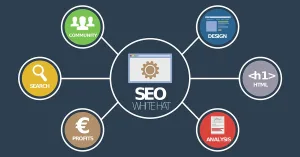If you are looking for help building your new business, the Rules of Thumb blog from MoneyThumb would like to make you aware of this great site, Ecwid, where they make it their business to help small business owners grow. The following is some advice from Ecwid on how to attract lenders even though your business may be brand new.
Financing a very young startup business can be a challenge. One of the things lenders consider when a business applies for a loan is its track record—usually the longer the track record, the better. Typically, traditional lenders like to see several years in business, so if your business is only one or two years old, it might be difficult to get a small business loan at the local bank or credit union. That doesn’t mean it can’t happen, but as a business owner, you’ll probably need a personal credit profile beyond reproach.
Most online lenders will work with a business with a year under its belt, but they’re not as likely to work with an early- or idea-stage startup. If the business is doing $100,000 in annual revenues and other business metrics are in place, an online lender could be a good choice for a small business loan.
The SBA can be an option for early-stage businesses, provided the owner has a good personal credit profile, and has collateral, and can demonstrate the ability to make the periodic payments. Plus, the SBA will likely want to see that the business owner has made an investment in the new business. In other words, they want to see some skin in the game.
No Revenue and No Cash Flow Make Borrowing Difficult
Even those lenders who are willing to work with younger businesses, including the SBA and many online lenders, will want evidence that the business has the ability to repay a loan. Unlike an investor who may be willing to wait for some kind of liquidity event that they anticipate will give them a substantial profit, lenders earn their profits through periodic payments. In other words, lenders aren’t really investing in your business; they’re making a business decision based on your ability to make loan payments.
This is true regardless of how old your business may be. Demonstrating the ability to make the periodic payments is a central part of qualifying for a loan.
Money Isn’t Always the Answer
A popular myth today is that all a business needs are money to be successful. Yes, it’s true, it often takes money to make money, but an influx of cash doesn’t guarantee business success. What’s more, there are many very well-capitalized businesses that still tend to struggle—as demonstrated by all the venture-backed companies that never meet their growth objectives despite the millions of dollars invested in them.
Nevertheless, there are ways for very young businesses to access capital. Crowdfunding is one example where a business’ credit profile, time in business, and annual revenue are less important than the idea or product the entrepreneur is pitching.
There are, however, other things a business owner can focus on in the first few years that could be time and energy well spent. While they might not guarantee a loan, they will likely create more options and improve the odds of success.
Tips for Improving Your Credit
Become familiar with your business credit profile. According to Levi King, CEO, and co-founder of Nav, the biggest misconception business owners have about business credit is, they don’t realize they have a business credit profile.
What’s more, this might sound like an oversimplification, but according to a recent survey conducted by Nav, those business owners who regularly monitored their credit profiles were 41 percent more likely to be approved when applying for a small business loan.
It is human nature to make a difference in the places where you’re really paying attention. Basically, attention drives behavior said King. Spending the first year or two becoming familiar with your business credit and taking steps to build a strong profile can make a big difference a year or two down the road.
Take advantage of the trade credit relationship. Most vendors and suppliers offer payment terms, or trade credit, to their good customers. This might not be a small business loan, but building one or two new trade credit relationships can be a powerful way to build a strong business credit history.
Once you open the doors, start looking for places where you can establish business credit accounts rather than relying on your personal credit. New businesses might equal lower scores, but the average small business owner is creating 1-1/2 trade credit relationships each year and using small loans to build their credit profiles over the first few years, ultimately indicating to us that many of these businesses are great borrowers, said Peter Bolin, Experian Director of Consulting and Analytics.
Fortunately, this type of credit is relatively easy to get when compared to a traditional small business loan. And, if your vendors report your good credit behavior to the business credit bureaus (this is important enough to ask about), it will help you establish a business credit history and build a strong business credit profile.
Apply for a business credit card. One of the most important steps you can take to build a strong business credit profile is to stop using your personal credit for business expenses. In addition to establishing trade credit relationships, a business credit card could be a good first step to building your business credit profile. Using your personal credit doesn’t do anything to build your business credit profile. Make sure the card you apply for reports to the business credit bureaus because some don’t.
Apply for a business credit card and make sure you make those payments on time. This will dramatically increase the depth of your credit report so when you do need that $100,000 from the bank or another lender, you’ll be likely to get approved. Additionally, don’t use your personal credit for business expenses. Take the time to establish a strong business credit profile. Consider it an investment in the future of your business, says Bolin.
The age of your business can make a difference for young businesses trying to access business credit, particularly those under a year old, but there are things you can start doing today that will improve the odds as the business passes the one or two year mark.
Focusing on establishing a business credit profile and demonstrating that your business can manage credit is an important first step to accessing the capital you need to grow your business.





















Add comment